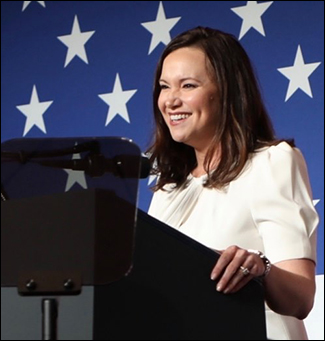By Jim Ellis — Thursday, Jan. 30, 2025
Senate
A recent 2026 political survey projects Sen. Mark Warner (D) posting a seven-point lead over Gov. Glenn Youngkin (R) in a hypothetical Senate race poll, but methodological flaws are apparent.The L. Douglas Wilder School of Government and Public Affairs at Virginia Commonwealth University conducted the survey, but the sampling period consumed almost a month (Dec. 18, 2024 – Jan. 15, 2025), and the sampling universe was comprised of 806 adults over the age of 18. The sampling period’s length reduces the accuracy figure and not segmenting the ample respondent universe into registered and/or likely voters further skews the data.
The methodology notwithstanding, Sen. Warner would lead Gov. Youngkin 45-38 percent on the ballot test according to VCU, but the Republican leads among Independents 37-16 percent. This suggests that Sen. Warner’s support among Democrats is greater than Gov. Youngkin’s backing among Republicans, but even these numbers are not supported in other similar surveys as detected for the open 2025 Governor’s race.
Furthermore, an incumbent Senator only commanding 16 percent of the Independent voting segment is abnormally low, and likely another reason to question the overall reliability of this VCU survey.
It is also important to note that neither Sen. Warner nor Gov. Youngkin have announced their 2026 Senate candidacy. It is presumed that Sen. Warner will seek a fourth term, but no formal announcement has been made to date. Speculation has been relatively heavy about Youngkin running for the Senate, but the Governor has yet to acknowledge interest in such a race. He is also rumored to be looking toward a 2028 presidential run, and if so, challenging Sen. Warner will not likely be his next political move.
The VCU pollsters also tested the open 2025 Governor’s campaign and find former Congresswoman Abigail Spanberger, at this point the consensus Democratic presumptive nominee, and Lt. Gov. Winsome Earle-Sears, the presumptive Republican nominee posting similar partisan numbers as found in the Senate race.
According to the VCU results, Spanberger would lead the Lieutenant Governor, 44-34 percent. It is here where we can draw a direct comparison with other recent surveys. For example, three other polls conducted during the period beginning Jan. 6-20 reveal much different results.
The most recent survey, from the co/efficient polling firm (Jan. 18-20; 867 likely Virginia voters; live interview & text), sees the two gubernatorial candidates tied at 40 percent apiece.
Christopher Newport University tested the Virginia electorate over the Jan. 6-13 period (806 registered Virginia voters; live interview) and found Spanberger recording a five percentage point advantage, 44-39 percent.
Earlier, Emerson College surveyed the Commonwealth just after the first of the year (Jan. 6-8; 1,000 registered Virginia voters; multiple sampling techniques) and they arrived at a ballot test conclusion similar to co/efficient’s results, with Spanberger edging Earle-Sears, 42-41 percent.
Therefore, the VCU survey conducted of adults and not registered or likely voters, seems to be an outlier because three other polls conducted within the same sampling period with more refined respondent universes project much closer results.
Whether a Warner-Youngkin Senate race materializes remains to be seen. If the contest does form, we can count on seeing a much closer contest than the VCU poll suggests, and one that would likely go down to the wire. The current prevailing wisdom among Virginia politicos, however, is that such a challenge campaign is unlikely to form.
The more likely Senate scenario sees Sen. Warner seeking a fourth term and easily winning re-election without facing a major Republican opponent.







